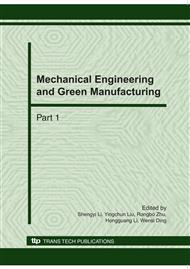p.238
p.242
p.247
p.252
p.260
p.265
p.271
p.276
p.282
The Effects of the ACL Reconstruction Tunnel(s) on Patellofemoral Contact
Abstract:
No quantitative data were reported in the literature regarding the effects of the ACL reconstruction tunnel(s) on patellofemoral contact .In this study the patellofemoral joint was built from MRI data of a normal knee. Based on this, the patellofemoral contact models in which there were ACL reconstruction tunnel(s) were also built. Then different contact statues of patellofemoral joint were simulated by orthogonal test and finite element method to analyze the effects of the ACL reconstruction tunnel(s) on patellofemoral contact. Results show that: 1. Stress on the cartilages is not sensitive to the parameters of position and orientation relatively, but the single-bundle and double-bundle reconstruction tunnel(s) significantly change the extent of the sensitivity to the motion parameters, especially the stress on the femoral cartilage. 2. The stress on the surface of cartilages also will be obviously changed by single-bundle/double-bundle tunnel(s) and they will significantly increase under some contact status, but for the contact pressure, it is inconspicuous. 3. For single-bundle tunnel, contact areas between cartilages change little while only about one-fifth of the total contact locations have changed by 20%. Besides, the effects of double-bundle are smaller than single-bundle tunnel. This study not only provides technical data to improve the reconstruction quality, but also supplys a method for the assessment of ACL reconstruction.
Info:
Periodical:
Pages:
260-264
Citation:
Online since:
October 2010
Authors:
Keywords:
Price:
Сopyright:
© 2010 Trans Tech Publications Ltd. All Rights Reserved
Share:
Citation:


